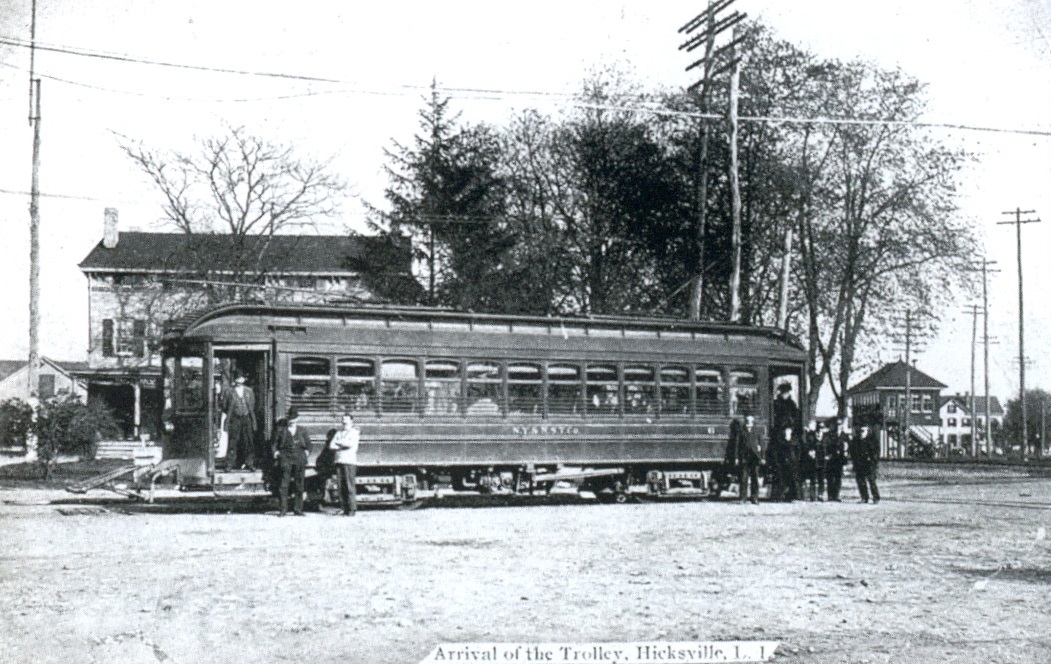Hicksville, located on the Main Line and Port Jefferson Branch of the Long Island Rail Road (LIRR), has long been a key transportation hub on Long Island. Today, it’s the busiest station east of Jamaica, with commuters filling the station both weekdays and weekends, traveling to and from destinations across Long Island and beyond. The evolution of Hicksville’s station and its role in the island’s transportation system is a remarkable story of progress that spans nearly two centuries.
Early Beginnings and Growth
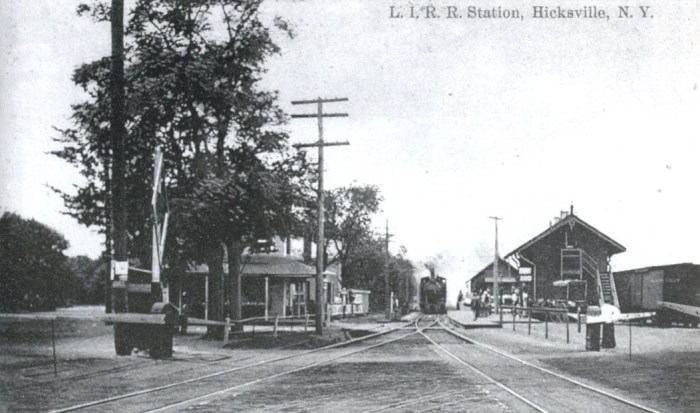
Hicksville’s history is tied closely to the establishment of the LIRR in the early 19th century. Named after Valentine Hicks, the railroad’s second president (1837-1841), Hicksville’s first depot opened on March 1, 1837, as the last stop of the newly founded railroad. However, it didn’t remain the end of the line for long. By 1841, the Main Line of the LIRR had been extended to Farmingdale, marking the beginning of the railroad’s rapid expansion across Long Island. In 1854, the Hicksville and Syosset Railroad began operation, eventually forming the Port Jefferson Branch we know today.
The early growth of the LIRR set Hicksville apart as a significant stop. But it wasn’t until the early 20th century that major improvements were made to meet growing demand. These upgrades included larger station buildings to accommodate both passengers and freight, further cementing Hicksville’s place as a vital part of the railroad network.
The Freight House: A Snapshot of Early Railroad Life
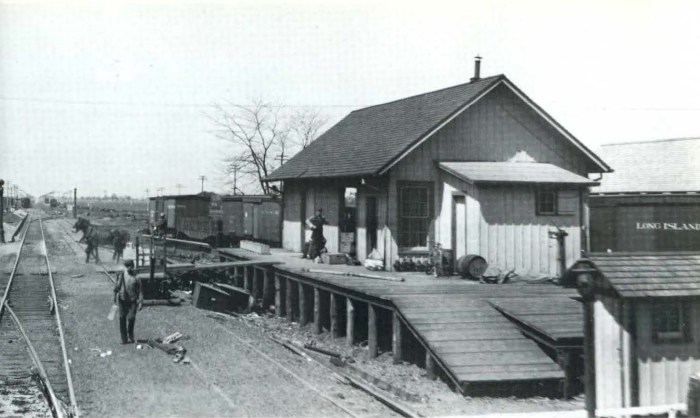
One of the most striking glimpses into Hicksville’s past comes from a historic photograph taken on May 3, 1909. The photo, captured from the rear of an eastbound train, shows the hustle and bustle around the freight house, a central feature of the station at the time. In the image, freight handlers can be seen standing among crates, while a teamster guides horses over the tracks, all set against the backdrop of the station’s growing infrastructure. The renovations of 1909—new station buildings, a larger freight yard, and the addition of a double-track Main Line—helped solidify Hicksville as a key rail hub.
Steam to Diesel: A Changing of the Guard
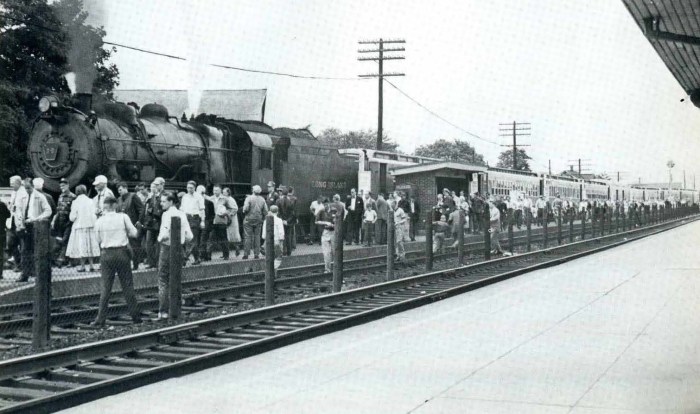
The mid-20th century marked a dramatic shift for the LIRR with the transition from steam-powered trains to diesel engines. The final steam-powered passenger train to Greenport ran on Oct. 8, 1955, a milestone celebrated by passengers who disembarked at Hicksville to witness the last steam train. The introduction of diesel engines significantly improved the speed and reliability of service, enhancing the role of Hicksville Station in Long Island’s transportation network.
Evolution and Expansion
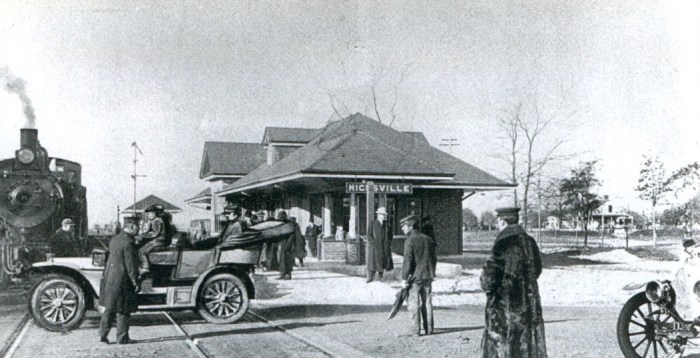
As the demand for rail service grew, Hicksville Station underwent several transformations. After a fire destroyed the original depot in 1864, it was rebuilt in 1873, with another station built in 1909. In the early 1960s, the station was elevated to accommodate modern train travel. The station’s structure from this era remains in use today, serving as a testament to its resilience and adaptability.
The Goldberg Eagle: A Symbol of History
Perhaps one of the most enduring symbols of Hicksville’s history is the Goldberg Eagle, a striking sculpture that once adorned the facade of the old Pennsylvania Station in Manhattan. Following Penn Station’s demolition in 1963, the eagle was relocated to Hicksville in 1965 as a tribute to the original station’s grandeur. “Hicksville is fortunate to have one of the Penn Station eagles,” David Morrison, rail historian, said. The eagle has since become a cherished landmark, standing proudly at the station and reminding commuters of the deep historical connections to Long Island’s rail legacy.
Hicksville Today and the Future
Hicksville Station continues to evolve with the needs of modern commuters. In 1970, the Main Line was electrified, providing a more efficient route to Penn Station. More recently, a $121 million renovation project was completed in 2018, upgrading platforms, waiting rooms, and security systems. These improvements have made Hicksville Station one of the most modern on the LIRR network.
Looking ahead, Hicksville is poised for further growth. In 2025, Amtrak is expected to introduce a new Northeast Regional service through Hicksville, offering additional high-speed rail options. There are talks of electrifying the Central Branch, allowing electric trains to travel from Hicksville to Babylon. While the timeline for Amtrak’s expansion remains unclear, Hicksville is a prime location for such a terminal due to its strategic position on Long Island.
The Hicksville Legacy
Hicksville Station stands as a symbol of Long Island’s rich railroad history. From its early days as a humble depot to its status as a bustling commuter hub, Hicksville’s evolution mirrors the island’s growth and development. Whether through historical photographs inside the station or landmarks like the Goldberg Eagle, Hicksville continues to honor its legacy while embracing the future of transportation.
As Morrison noted, “Hicksville is one of the most historic railroad locations on Long Island,” and its role as a transportation nexus will only continue to grow in the future.
Want to see more photos? Visit New York Heritage (www.nyheritage.org) and search for the Hicksville photograph and postcard collections, under the custodial care of Hicksville Public Library.




